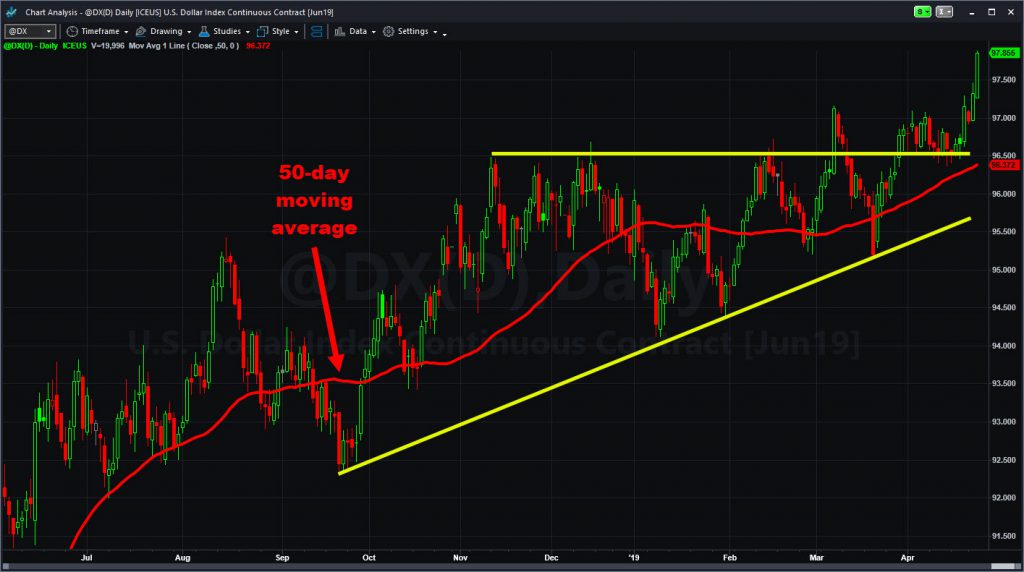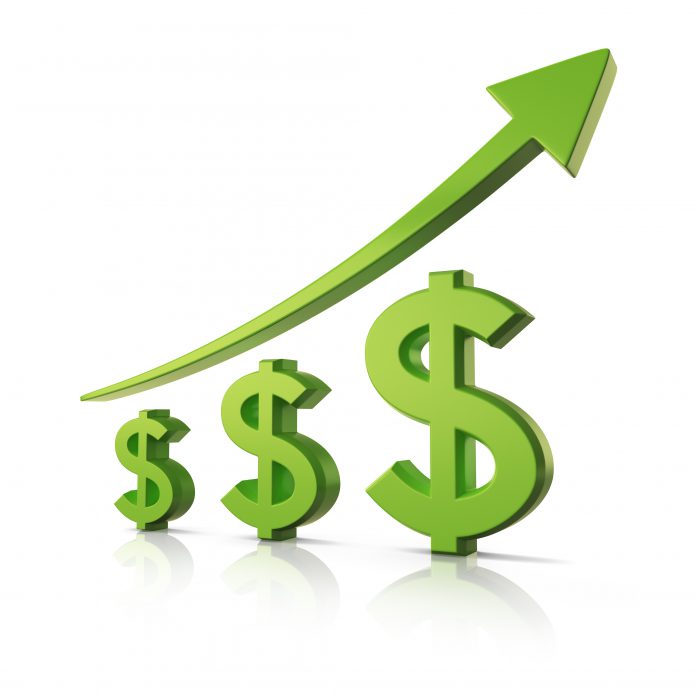The greenback surged yesterday as America’s growth prospects kept outshining the rest of the world.
Futures on the U.S. dollar index (@DX) ended Wednesday’s session at 97.86, their highest close in more than two years. Two broad forces seem to be at work. One’s a push and the other’s a pull.
The “push” consists of general weakness abroad. Wednesday morning, for instance, Germany’s Ifo survey showed less confidence than expected in Europe’s biggest economy. One week before, the IHS Markit index painted a similar picture. European Central Bank chief Mario Draghi was also cautious earlier in the month.

Rapid Improvements in U.S. Economy
The “pull” is a strong domestic economy as Wall Street holds its breath for tomorrow’s gross domestic product (GDP) report. Back in early March, outlooks for the number were bleak, but indicators have shown a rapid improvement more recently.
Interestingly, areas that lagged in 2018 (consumption and foreign trade) have been some of the best performers this year. Meanwhile, the previous leaders (manufacturing and business investment) have taken a breather.
The GDP report will be the first of three government estimates for growth in January-March period. It’s one of several important headlines this week and next. Today also features initial jobless claims and durable-goods orders.
Next week brings monthly employment data, the Institute for Supply Management’s manufacturing report and a Federal Reserve meeting. All those could keep markets focused on the strong dollar. Keep reading Market Insights for more on those.
Trading the Greenback
So how to play it? Moves in the U.S. dollar can impact several other assets, including stocks, exchange-traded funds (ETFs) and futures.
The Russell 2000 (IWM) often benefits because its member companies are more focused on the domestic economy. Just the opposite may be true for larger companies, like members of the Dow Jones Industrial Average (@YM) and Nasdaq-100 (@NQ).
Banks and financials could also move because their business tends to benefit from a strong U.S. economy. Ditto for retailers. That may spur interest in the SPDR Financial ETF (XLF) and SPDR Retail ETF (XRT).
The big losers could be precious metals and emerging markets, which typically move in the opposite direction as the U.S. dollar. Some active securities could be gold futures (@GC), the Market Vectors Gold Miners ETF (GDX) and the iShares MSCI Emerging Market ETF (EEM).
By the way, the @DX index gets more than half its weighting from the euro. Throw in other regional currencies like British pound, Swedish krona and Swiss Franc, and the index is more than three-quarters European.
In conclusion, the U.S. dollar has been rising along with hopes for the economy. Now some big events are coming that could drive even more activity in the market.


























